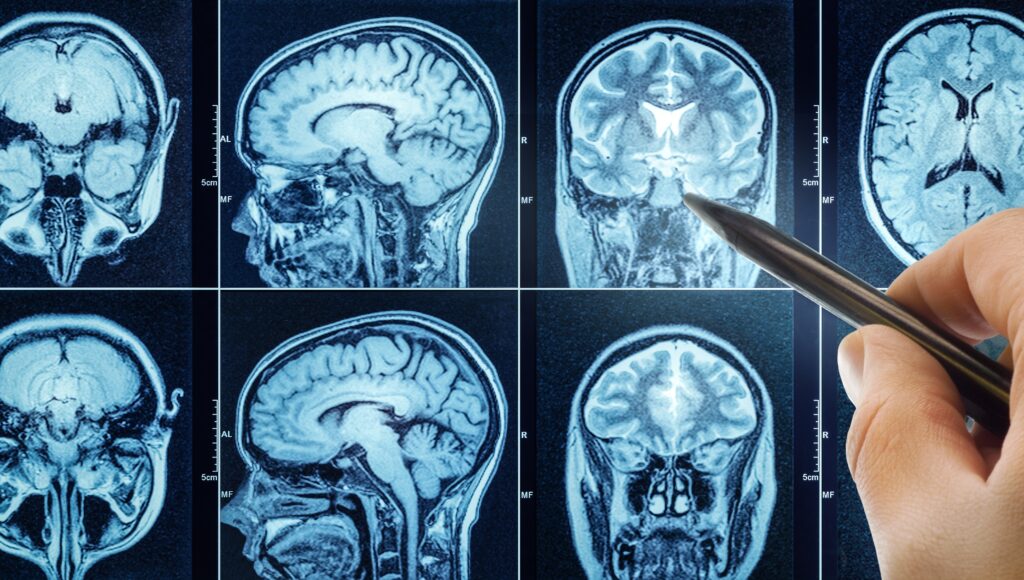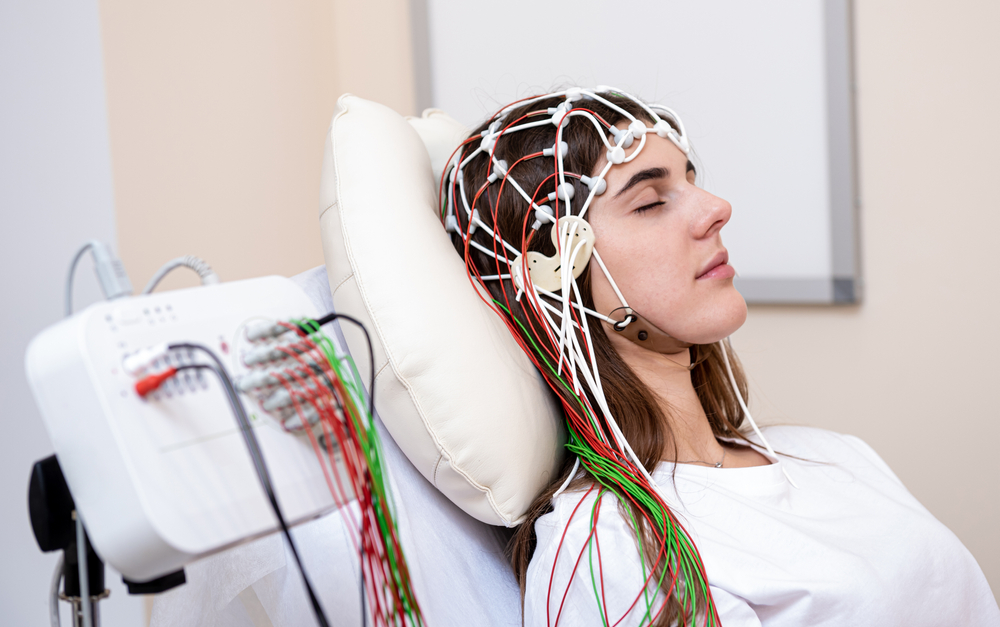China’s New Brain-Spinal Implant Lets Paralyzed People Walk Again in Just 24 Hours

What if the word impossible was just a placeholder for something we haven’t figured out yet?
For decades, paralysis from spinal cord injuries was treated like a closed door — one locked tight by biology, sealed by time, and buried under the weight of expert consensus. Even the most advanced technologies, like Elon Musk’s Neuralink, built their visions around the idea that once the spinal cord is severed, the body below it is lost. Forever.
But every now and then, the universe hands us a moment that dares to rewrite the rules.
In Shanghai, a man who hadn’t moved his legs in years took a step — not with robotic limbs or computer-assisted motions, but with his own body. Just 24 hours after receiving a tiny implant in his brain and spine, he could lift his legs. Within two weeks, he was walking over obstacles.
Not fiction. Not hype. A real human being, reconnected to his own nervous system.
This isn’t just a scientific breakthrough. It’s a message. A spark. A wake-up call to everything we’ve given up on — too soon.
The Science Behind the Miracle
At the core of this groundbreaking development is a revolutionary brain-spinal interface — a tiny, intricate system that does something once thought biologically impossible: it reestablishes the broken communication between the brain and the spinal cord.
Here’s how it works.
Researchers at Shanghai’s Fudan University implanted two minuscule electrode chips — each just about 1mm wide — into the motor cortex of the brain and the spinal nerve roots. These chips collect and decode the brain’s electrical signals — the ones that represent movement intentions — and then deliver them with pinpoint precision to the parts of the spine responsible for leg motion.
Think of it like fixing a broken bridge. Traditional technologies like Neuralink use external devices to bypass the injury — rerouting signals to robotic limbs. But this new interface doesn’t bypass the problem. It restores the bridge, reigniting dormant nerves and stimulating the body’s own systems to start working again. This process, called neural remodeling, is what sets it apart.
Neural remodeling is more than signal transmission. It’s a rewiring — a process by which the brain and spinal cord begin to reshape and rebuild their original pathways. In previous studies, like those in Switzerland, this kind of recovery took months. But in the Chinese trial, it happened in days. The first patient regained the ability to move his legs within 24 hours. By day 14, he was walking over obstacles with the help of a frame.
Crucially, this isn’t just about movement. Patients reported returning sensations — warmth in their feet, muscle contractions, even the ability to feel when they needed to use the bathroom. This suggests deeper nerve regeneration, not just surface-level stimulation.
What makes this even more remarkable is the minimal surgical damage. The Chinese team’s integration of three devices into one streamlined system not only reduces risk — it accelerates healing. And all of it was developed with technology manufactured in China, signaling a major leap in the country’s role in global neurotechnology innovation.
This isn’t science fiction. It’s science finally catching up with human hope.
Real People, Real Recovery

It’s one thing to understand the science. It’s another to see it change a life.
Take the story of a 34-year-old man in China — a construction worker who fell from a height of three meters, leaving him completely paralyzed from the waist down. For two years, he lived in a wheelchair, with doctors telling him that walking again was out of the question. But on January 8th, 2024, everything changed.
Just hours after receiving the brain-spinal implant developed at Fudan University, he lifted his legs for the first time since the accident. Within two weeks, he was walking over five meters, stepping over obstacles with the aid of a frame. More importantly, he began to feel again. “My feet feel warm and sweaty,” he said. “When I stand, I feel the muscles in my legs contracting.” Even subtle functions — like the ability to sense when to use the restroom — began to return. That’s not just movement. That’s autonomy. That’s dignity.

Meanwhile, in Switzerland, another man, Gert-Jan Oskam, shared a similar miracle. Paralyzed in a cycling accident 12 years prior, he regained the ability to walk, stand, and even climb stairs — using only the power of thought. His brain signals, decoded by implants, were wirelessly transmitted to his spinal cord. “I felt before that the system was controlling me,” he said. “But now I am controlling it.”
These aren’t headlines. These are humans reclaiming parts of themselves they were told were gone. They’re not walking like machines. They’re walking like themselves — slowly, steadily, and with something more powerful than muscle: hope.
Even more striking is what happens after the implants are turned off. Some patients retain movement, suggesting the nervous system is beginning to heal on its own. It’s as if the body, once given the right spark, remembers what it was always capable of.
And that spark — that bridge between brain and spine — is changing what we believe the human body, and spirit, can do.
Global Implications — A Shift in Power and Possibility

When one person walks again after years of paralysis, it’s a miracle. When multiple people do, using entirely new technology, it’s a movement — one that’s reshaping the balance of power in science, medicine, and human potential.
For decades, breakthroughs in neurotechnology were largely driven by the West — elite universities, Silicon Valley companies, and billion-dollar labs. But this paradigm is shifting. The brain-spinal interface that helped four paralyzed individuals walk again wasn’t developed in California or Cambridge. It was created in Shanghai, using Chinese-made devices, operated by Chinese scientists, and executed with unprecedented speed and precision.
This moment doesn’t just highlight a medical breakthrough. It signals China’s accelerating ascent as a force in global healthcare innovation. According to the 2024 Nature Index, China now ranks second only to the U.S. in health sciences research — and the gap is closing fast.
But beyond geopolitics, the implications run deeper.
There are an estimated 3.74 million spinal cord injury patients in China alone, with 90,000 new cases every year. Globally, those numbers multiply. Many of these individuals live in regions with limited access to high-end medical equipment — the kind that’s typically required for cutting-edge rehabilitation. The fact that this new brain-spinal interface is minimally invasive, rapidly effective, and developed domestically gives hope not just to a few — but potentially to millions.
Even more transformative is what this technology represents. Unlike many previous solutions that kept patients tethered to machines, this approach aims to liberate them from lifelong dependence. The goal isn’t just to restore movement but to reignite the body’s own intelligence — to heal, to rewire, and ultimately, to function independently.
As Professor Grégoire Courtine of EPFL put it, this is a “paradigm shift in what was available before.” It’s a shift in how we treat injury. A shift in where innovation comes from. And a shift in what kind of future we dare to believe in.
Because when the power to walk again is no longer reserved for the lucky few — but made possible for the many — we begin to touch something bigger than technology. We begin to touch equality. Dignity. And shared possibility.
A Wake-Up Call for the Human Spirit

Sometimes science doesn’t just solve problems — it holds up a mirror.
This breakthrough in brain-spinal technology isn’t just about paralyzed people walking again. It’s about waking up something inside all of us: the truth that limitation is often not a fact, but a belief we’ve rehearsed into permanence.
For years, these patients were told they’d never move again. That their bodies were broken. That the best they could hope for was to adapt. But then came a team of researchers who didn’t ask, “What’s realistic?” They asked, “What’s possible?”
And in doing so, they proved something radical: sometimes, the body remembers how to heal — it just needs a signal.
So here’s the question: What have you accepted as final in your own life?
Is there a dream you’ve buried under practicality? A relationship you’ve written off as too damaged? A part of yourself you’ve labeled as permanently broken?
These patients — standing, walking, feeling again — are reminders that renewal doesn’t always happen on our timeline. But it can happen. With the right intervention. The right belief. The right moment of awakening.
Technology gave them a second chance. But we don’t always need implants to rebuild what’s been lost. Sometimes, we just need to challenge the narrative that says, “This is how it will always be.”
Because the truth is: healing isn’t just a medical concept. It’s a human one.
And maybe the miracle you’re waiting for starts with believing that it’s still possible.
The Bridge Between Science and Soul
This isn’t just a story about four patients in a hospital room in Shanghai. It’s a story about how resilience can be rewired, how hope can be engineered, and how the impossible can start with a single signal — a thought, a spark, a step.
The brain-spinal interface is more than a medical device. It’s a metaphor. A reminder that sometimes, we don’t need to escape our brokenness — we just need to reconnect to the part of us that never gave up.
Because beneath the scar tissue, behind the silence of nerves, there’s still life. Still fire. Still possibility.
What science is doing for paralyzed bodies, you can do for your spirit: Reconnect. Rebuild. Reclaim.
So the next time someone tells you it can’t be done, that it’s too late, or that you’ll never walk that path again — remember this:
A man who was paralyzed for years stood up just 24 hours after daring to believe again.
Maybe today, you can too.
Loading...

